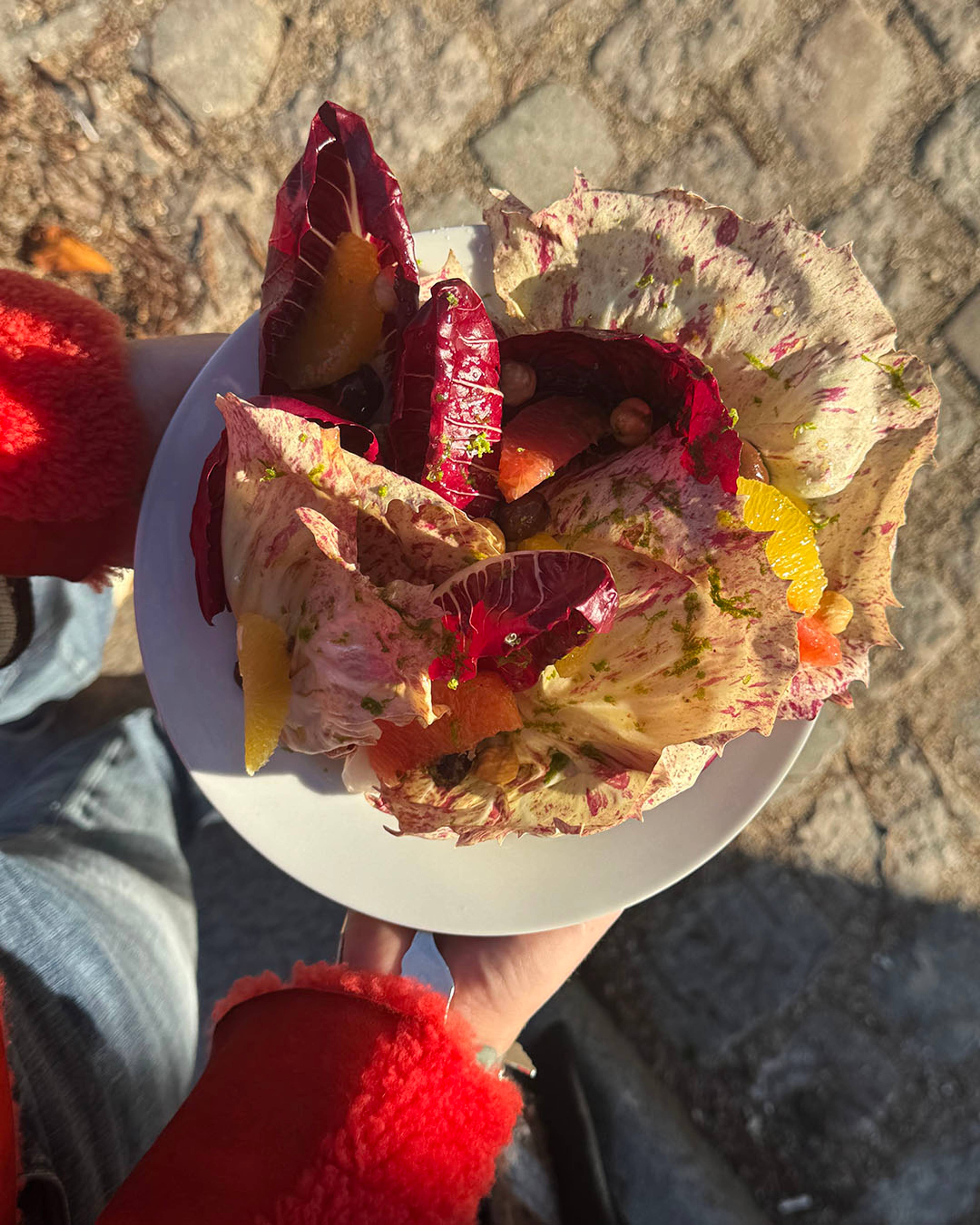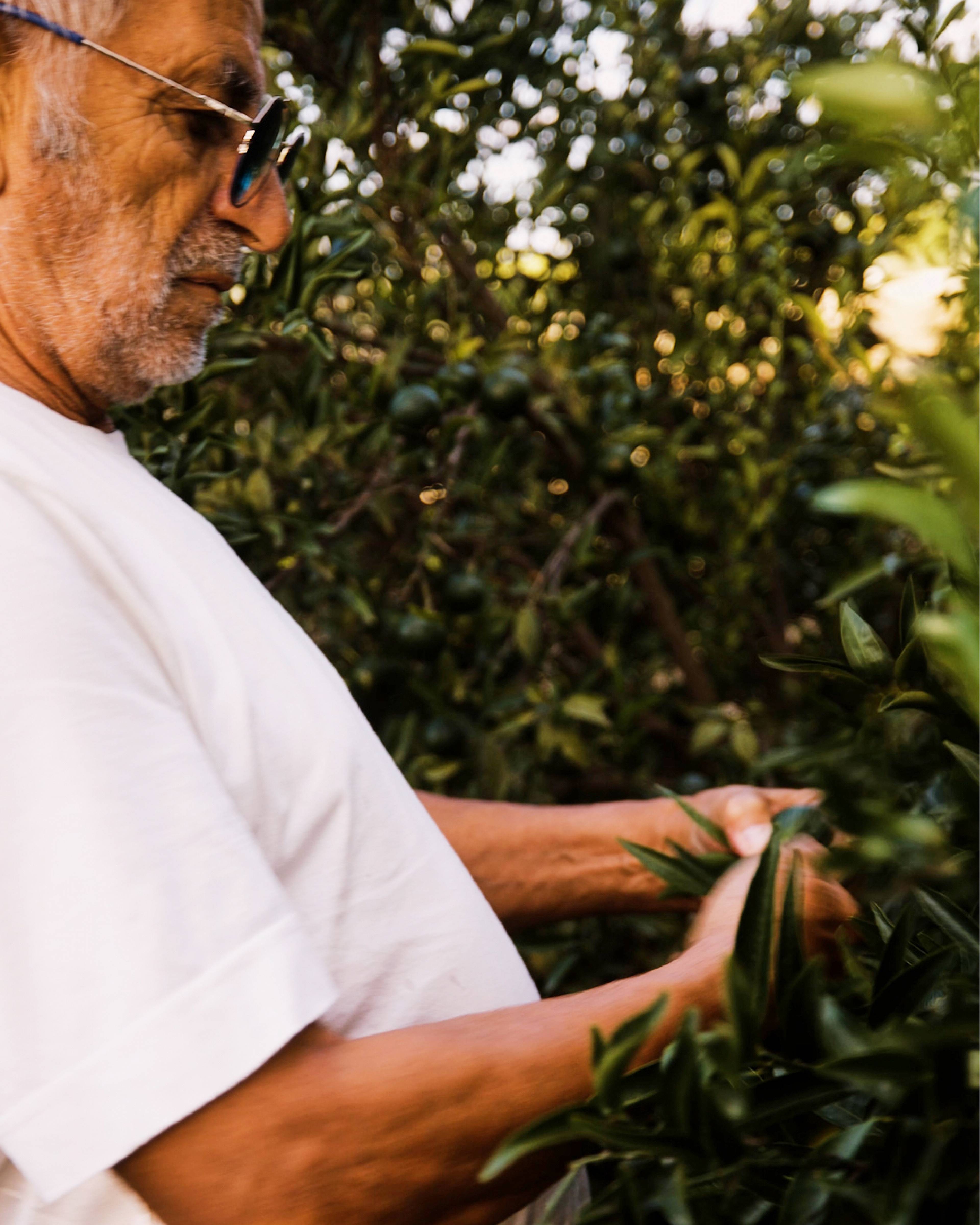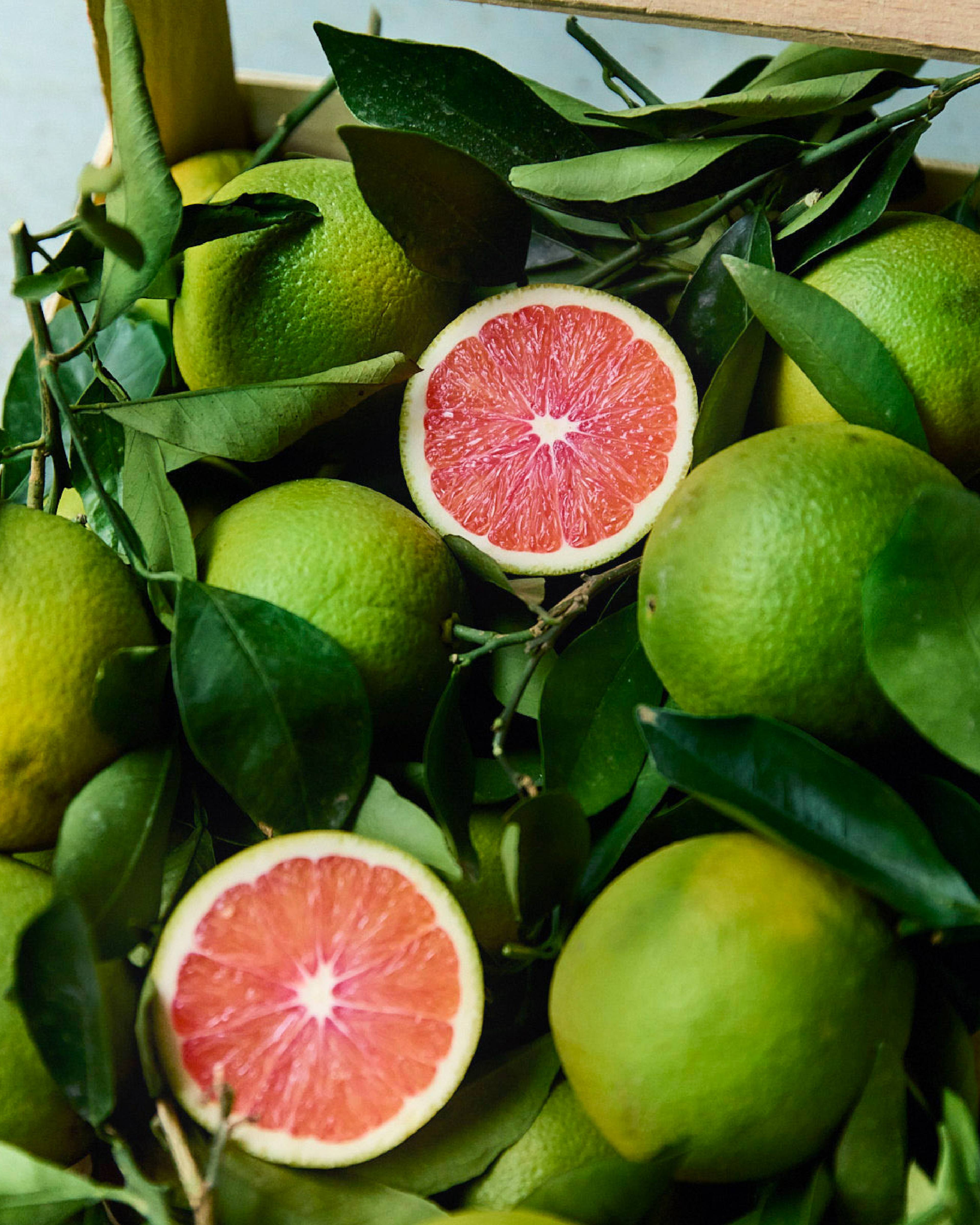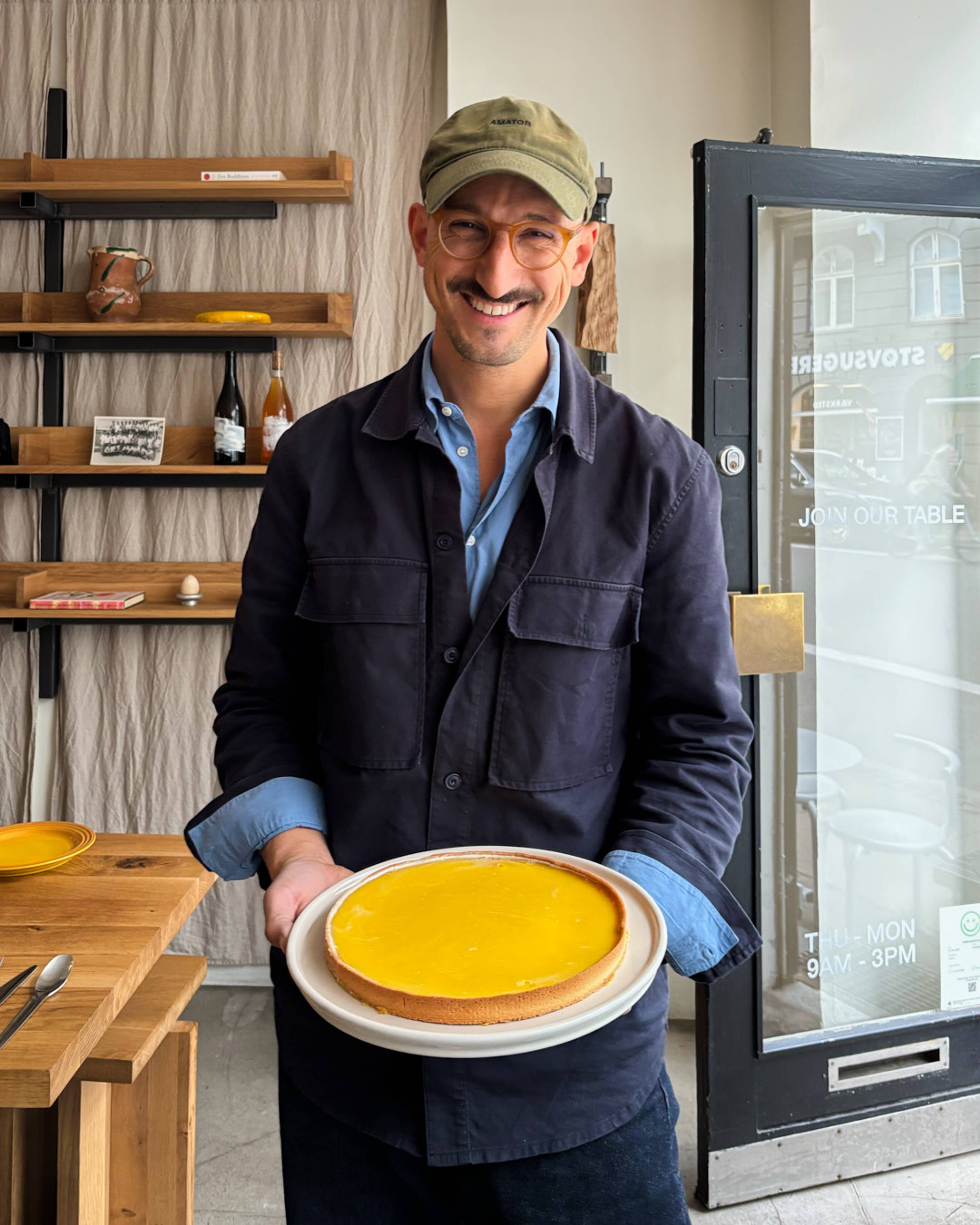REINE CLAUDE DORÉE AND ANISE JELLY WITH LOUIS THOMPSON
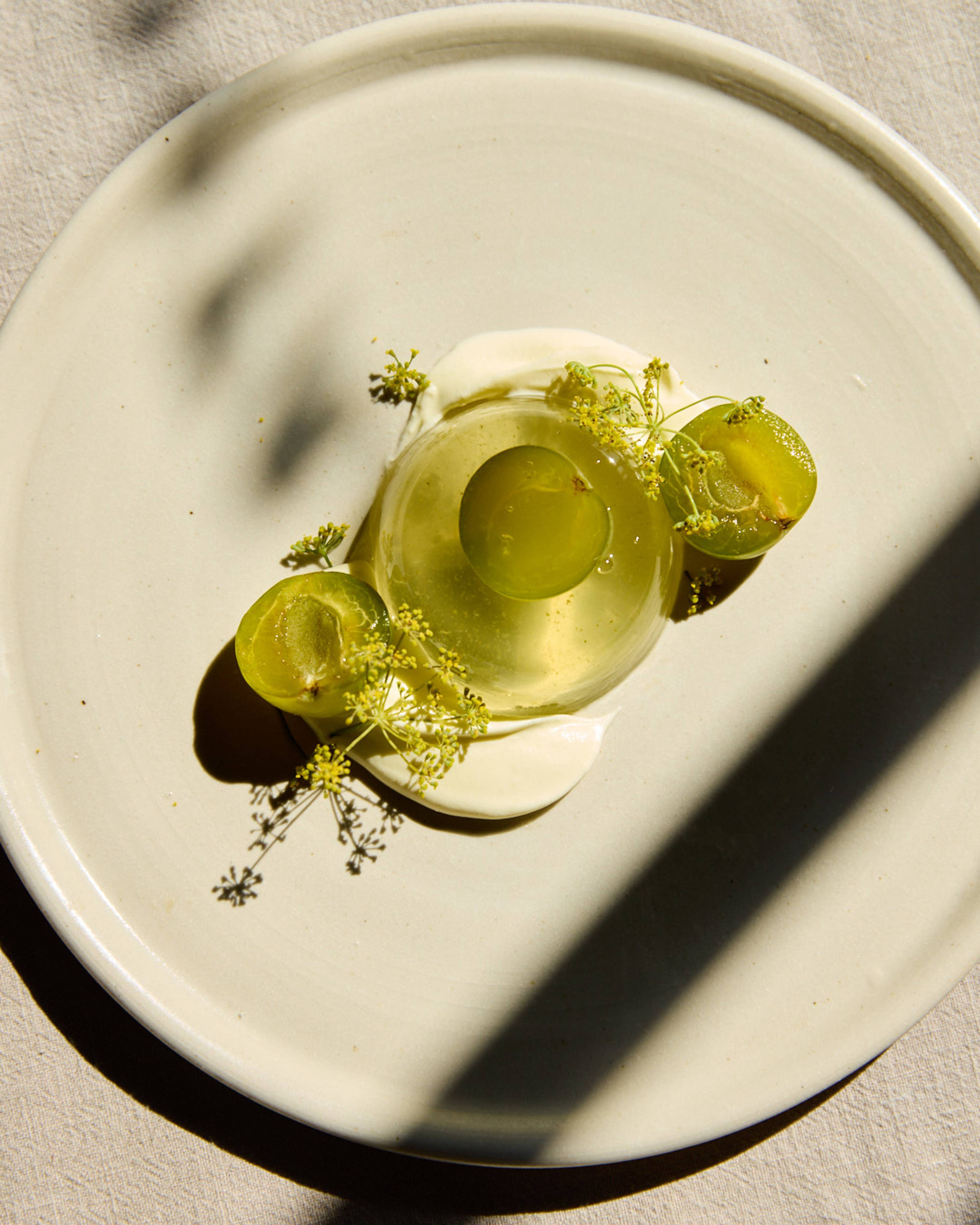
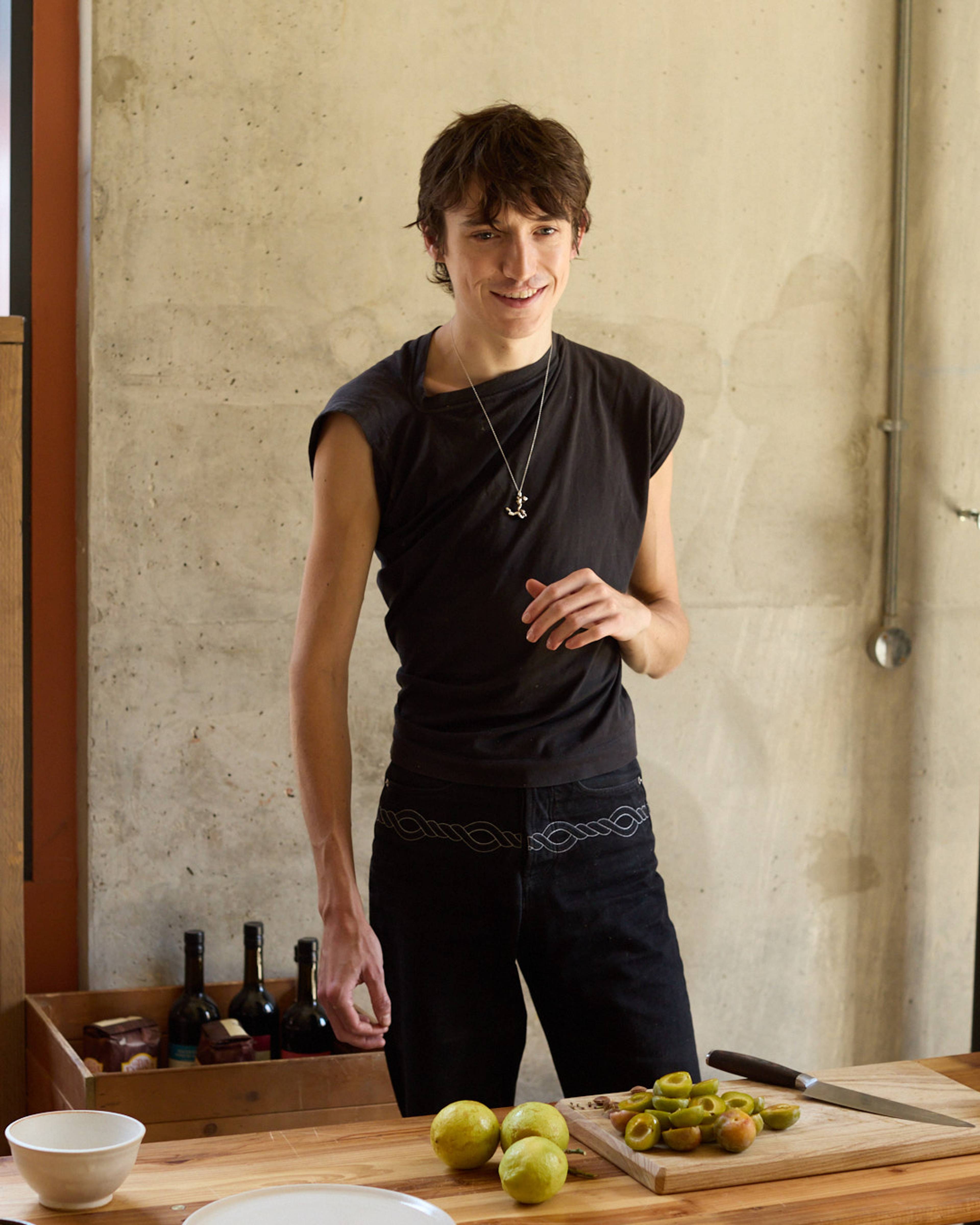
The words jelly and art might not instinctively belong together, yet Louis Thompson’s Reine Claude Dorée and Anise Jelly makes the pairing undeniable.
When you see it: light shimmering through the smooth, jewel-like jelly, fennel flowers casting shadows across the plate, set upon a thick linen tablecloth, a work of art is the only phrase that really rolls off the tongue.
It’s a dessert, yes. But it’s also a considered composition.
When Louis first arrived in London from Melbourne, he and his friend Katie took weekly visits to the London Borough of Jam in Clapton, where a jar of greengage and fennel pollen jam opened his eyes to unexpected pairings. As Louis walks us through his recipe, that memory lingers here.
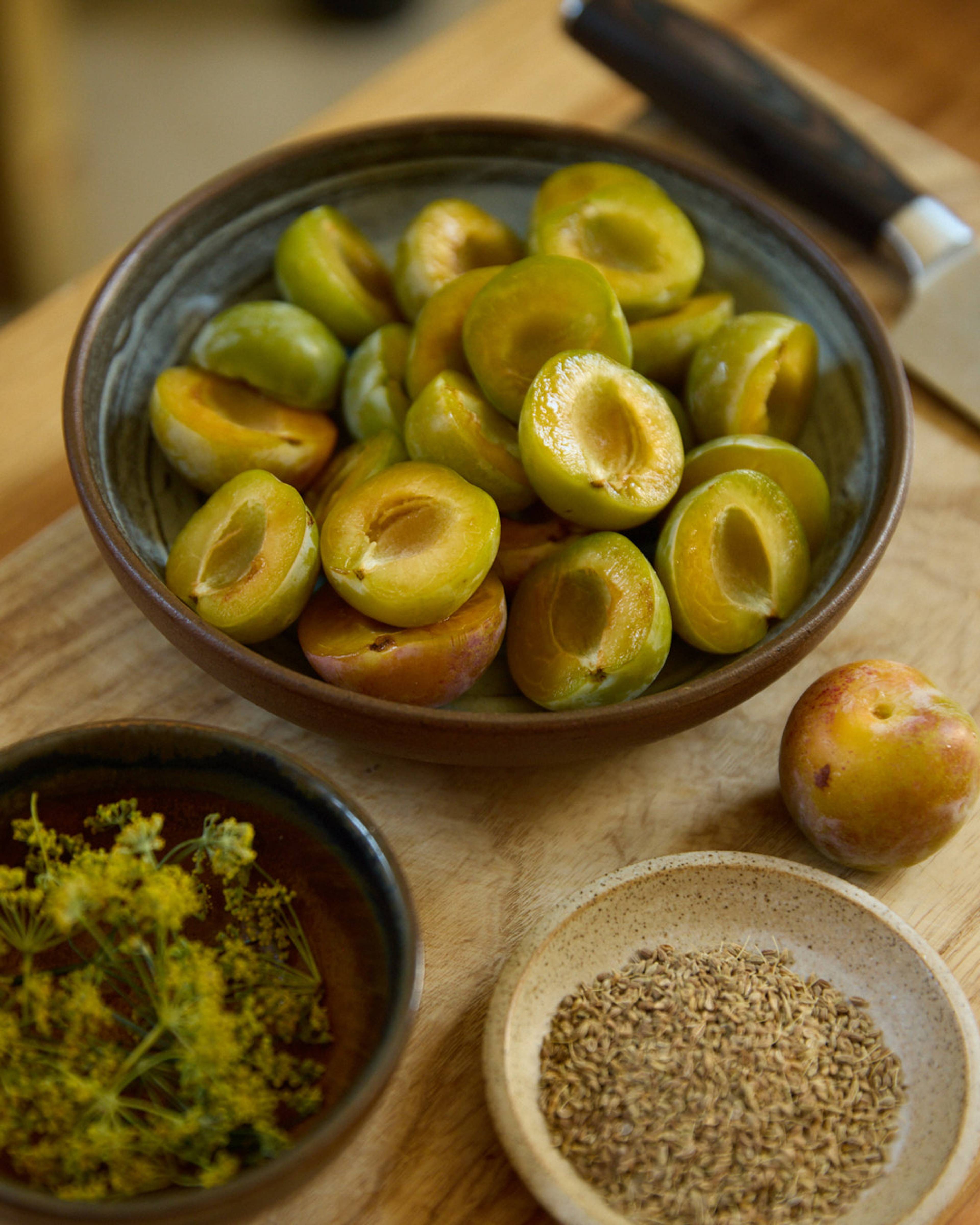
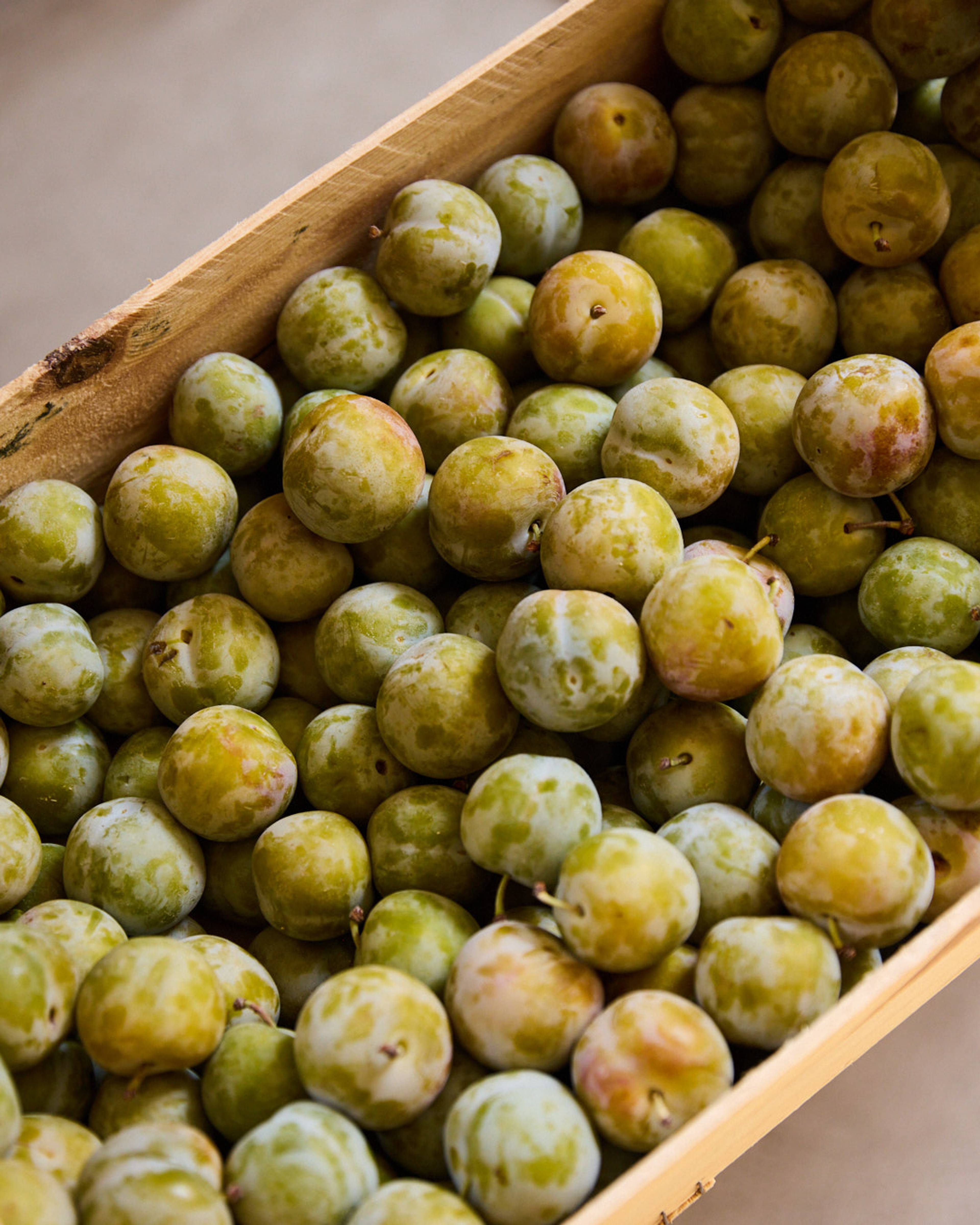
What strikes us most as Louis prepares this dish is his precision and care. The placing of each flower. The measured sweeps of cream. The plum neatly set inside the center of the jelly. The making of this dessert feels like a lesson in the art of noticing.
Louis’ path to pastry was unexpected. He came to London to study fashion at Central Saint Martins, baking at night, sometimes til the early hours of the morning.
“It actually started with bagels,” he says, recalling his first kitchen job before moving on to Violet Bakery and now, Spring. For a while, he resisted pursuing food professionally, but eventually realised it was where his passion lay. The one thing he was always “reading about, talking about and thinking about”.
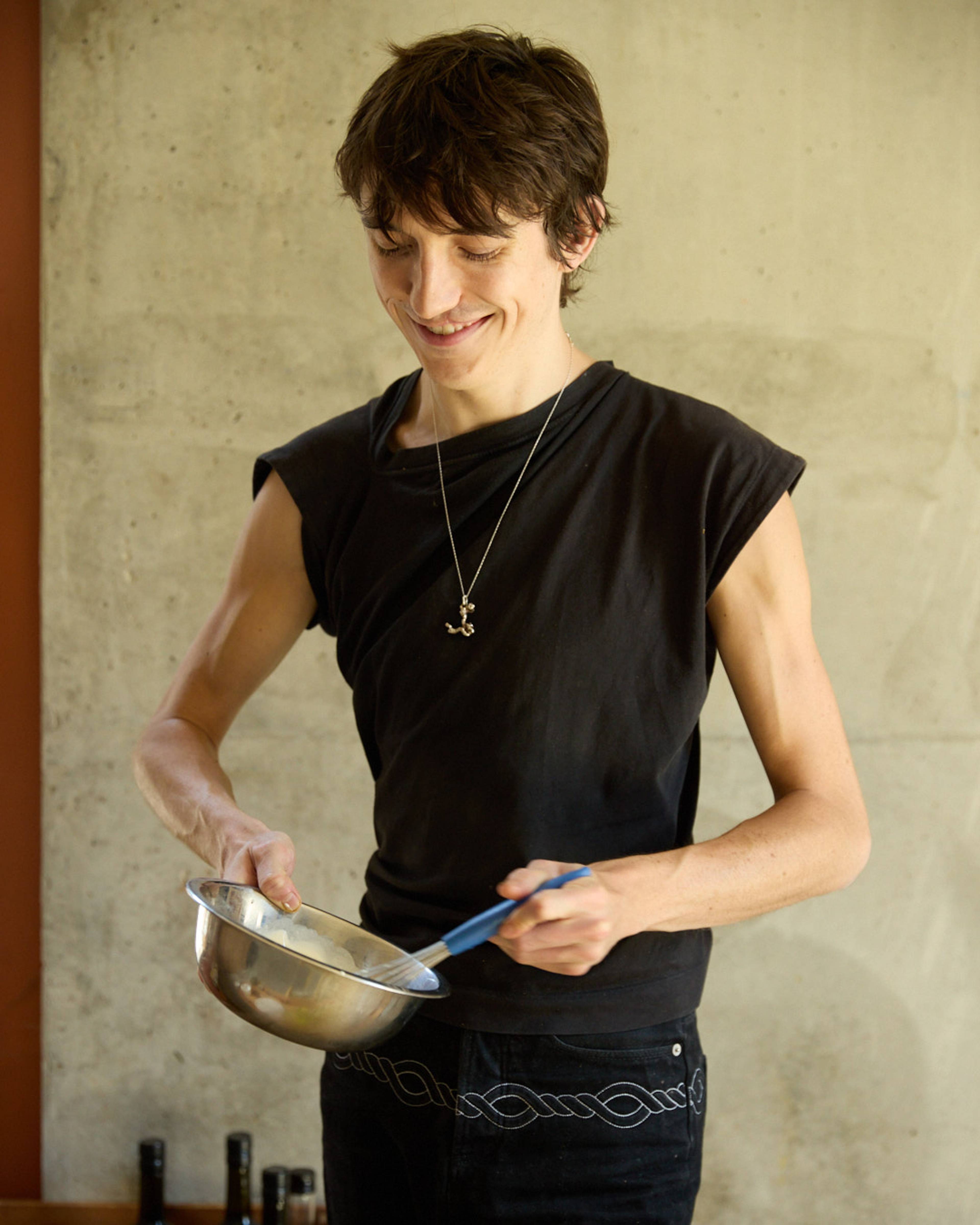
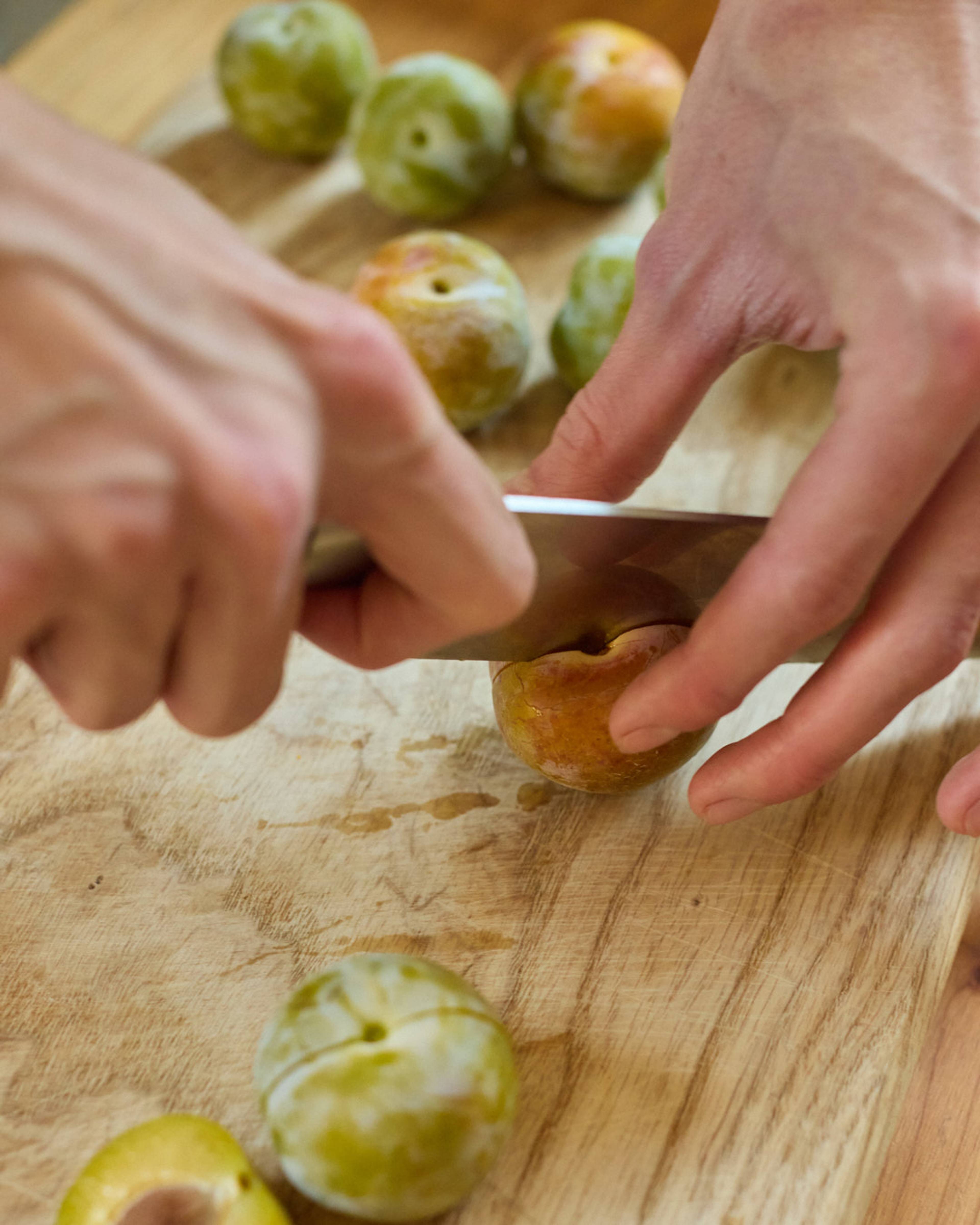
The hero of this dish is of course, the Reine Claude Dorée Plum. Grown in chalky soils near Moissac, an area long considered the birthplace of France’s finest plums, these come from three dedicated growers: Tristan, Guy, and Marc.
This old greengage variety, originally brought from Asia to France centuries ago, was so beloved by the reigning queen that it took the name: Reine Claude.
The delicate nature of this fruit generally keeps it close to home: thin-skinned, web-scarred, and prone to splitting in rain, most growers won’t take the risk. But Tristan, Guy, and Marc do more than take the risk, they let the fruit hang until sugars peak, harvesting only at full maturity.
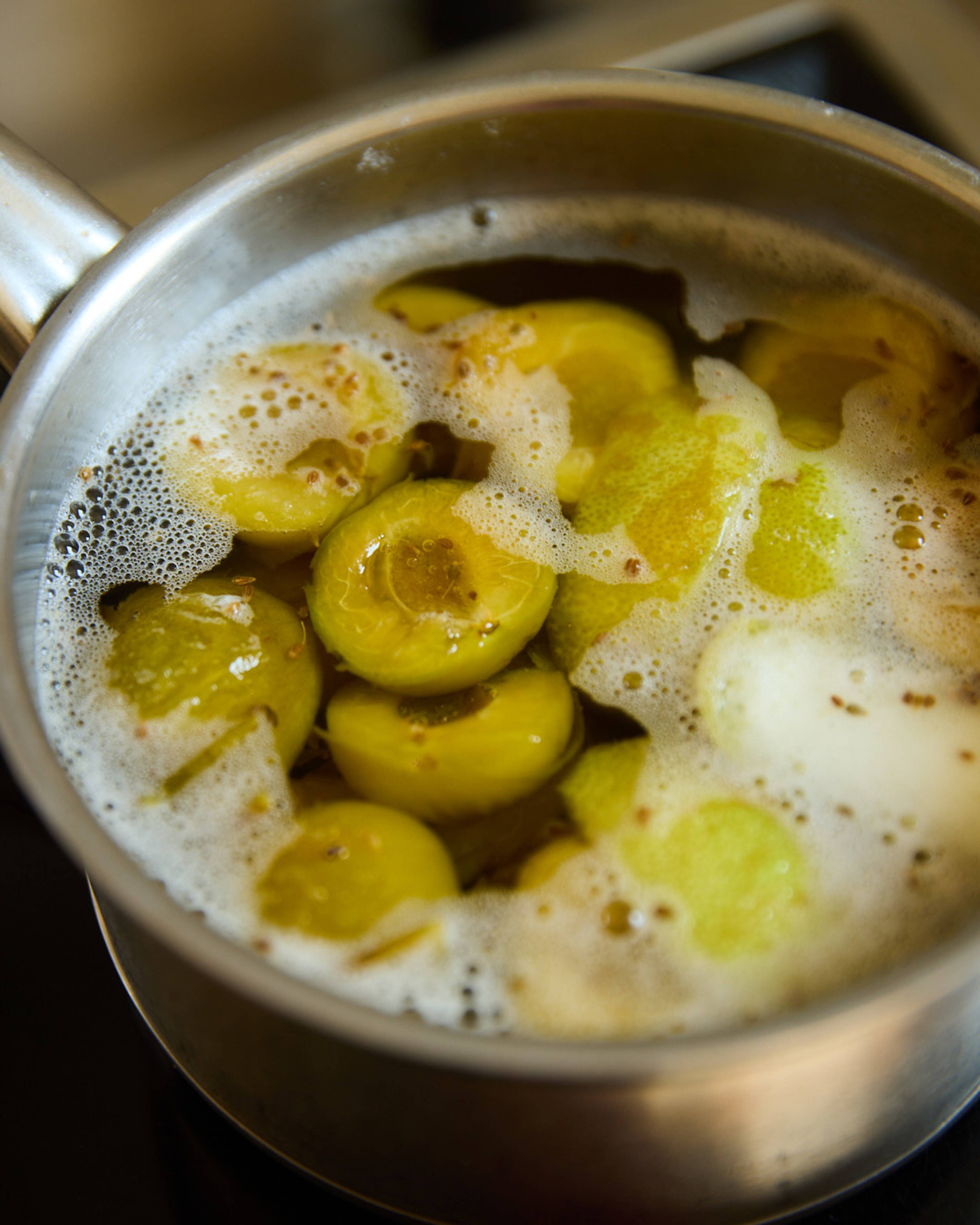
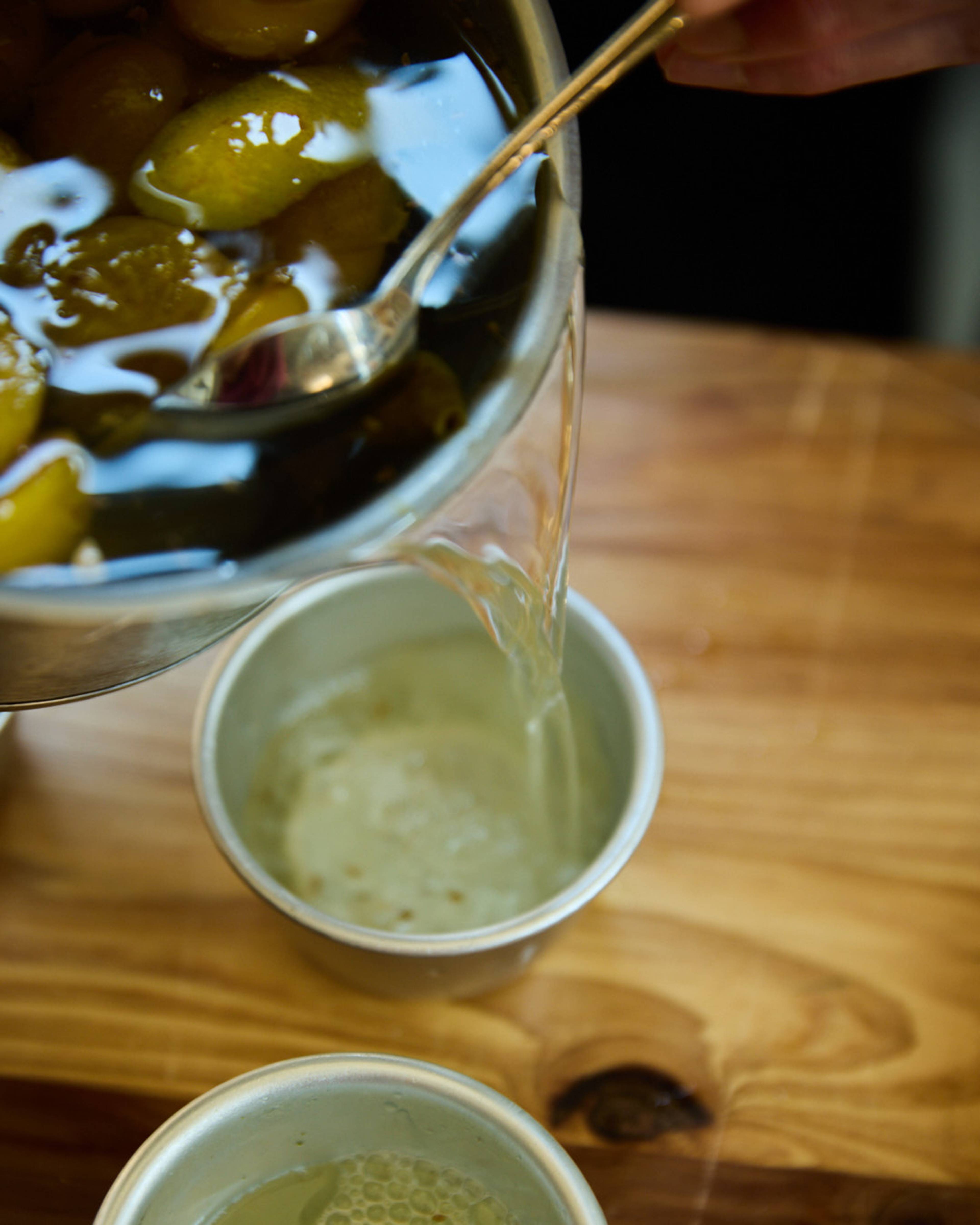
REINE CLAUDE DORÉE AND ANISE JELLY WITH FENNEL POLLEN CREAM
INGREDIENTS
For the jelly
300g sugar
600g water
1 Lemon
1.5t aniseed
3 sheets gelatine
4 Reine Claude Dorée Plums, halved, plus more to serve
For the cream
300ml cream
10 fennel blossom heads, plus more to serve
1 tbsp sugar
Louis recommends: This dessert is best prepared the day before you serve it.
METHOD
- For the cream, submerge the fennel blossoms in the cream and infuse in the refrigerator overnight.
- For the jelly, combine the sugar, water, aniseeds, pared lemon zest, and lemon juice in a small pot and bring to the boil, then remove from the heat. Allow it to infuse for 30 minutes. (Tip - tie the anise in a small bag so you can remove it when you are happy with the flavour).
- Taste your poaching liquid for sweetness, adding more lemon juice as necessary.
- Return the liquid to a simmer and add the halved plums, immediately taking it off the heat. Cover the surface with a cartouche to minimise browning. Allow it to sit for at least an hour for the greengages to give off their flavour - the longer the better.
- When you are happy with the flavour, prepare your gelatine. Strain your poaching liquid, reserving the plums. Be gentle as they will be delicate at this point.
- Place your gelatine in cold tap water, and allow to soften for 5 minutes.
- Heat a small portion of the poaching liquid - around 150ml - just until steaming.
- Add your softened gelatine, making sure to squeeze out all excess water, and stir thoroughly to dissolve.
- Slowly pour in the remaining poaching liquid, stirring constantly.
- Decant your jelly mixture into individual jelly moulds (120ml each), placing a plum half in each.
- Place in the fridge and let it set for at least four hours, or preferably overnight.
- The next day, strain your fennel blossom cream and add the sugar. Whip to soft peaks.
- Unmould the jelly by dipping it into a bowl of warm water for 5 seconds and flipping onto a plate.
- Dollop with cream and serve with fresh Reine Claude Plums and fennel pollen.
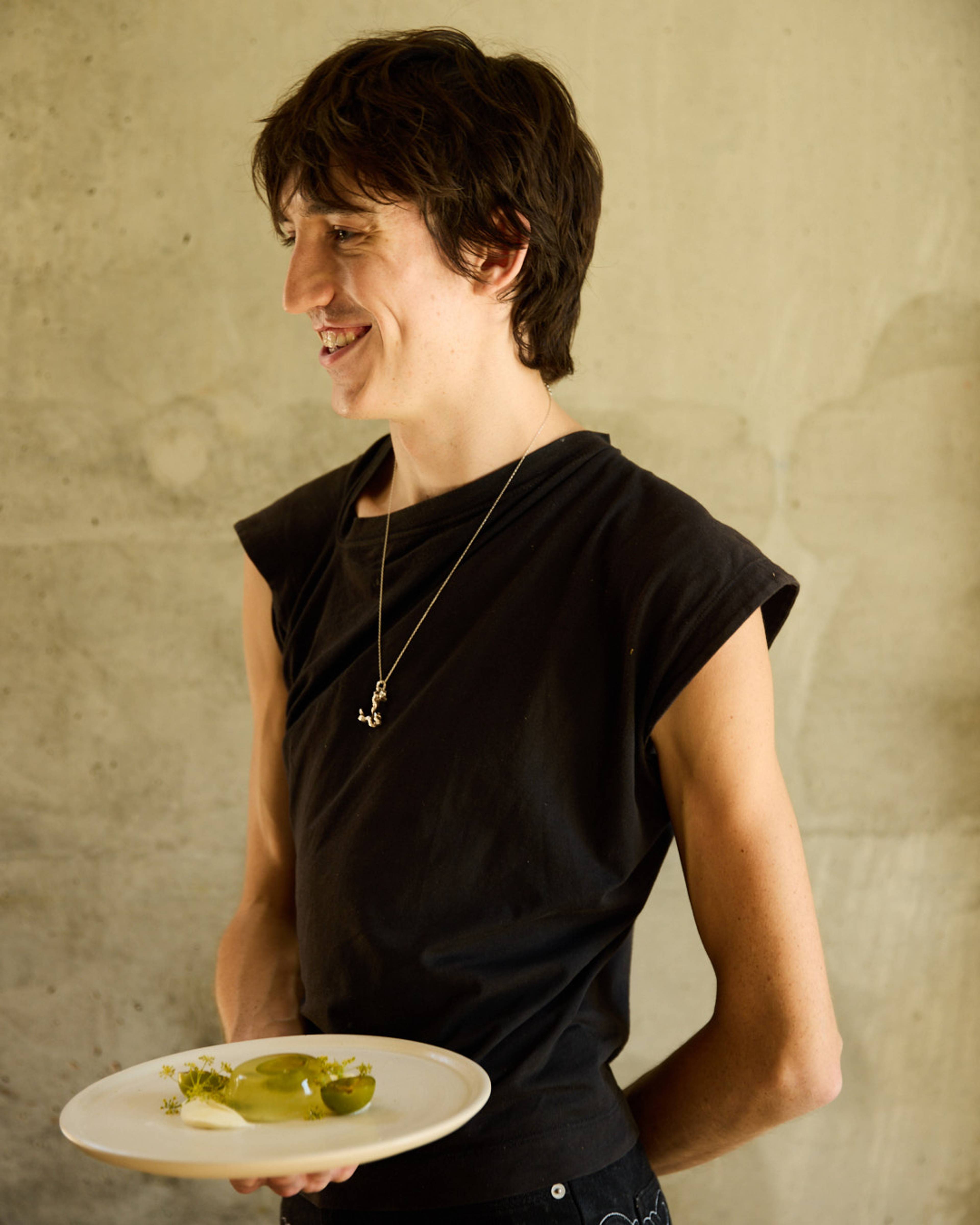
You originally moved to London to study fashion. How did baking come into your life?
I moved to London about six years ago, after finishing an economics degree in Australia. I came here to study Fashion at Central Saint Martins, but while I was preparing to move, I was under quite a lot of stress, and I started baking as a bit of a coping mechanism. It began with one cake, and then I never really stopped.
I’d come home from call-centre shifts at midnight and bake until 3am. Even while at St Martins, I was baking constantly. Eventually, I needed a job and took one at a small café. At first, I resisted pursuing baking seriously, but slowly I realised it was where my passion was.
What were those first baking jobs like?
Funnily enough, it actually started with bagels. A lot of people know me now for cakes, but bagels came first. I enjoyed it, and then I found Violet Bakery just down the road. I got a job there while still at St Martins and even managed to make it count as my placement. I was splitting my time between PR for a designer and baking cakes at Violet, and I had to decide which path to commit to.
How did you make the leap from fashion to food?
I realised the one thing I was always reading about, thinking about, and talking about was food. So I decided if I was going to do this, I wanted to do it properly.
I went for a job at Spring, even while still writing my thesis and working at Violet. There was even a period of time where I was doing all three at once.
Do you see a connection between fashion and food?
Definitely. Especially in pastry, where it’s not about utility but about pleasure. Like fashion, it’s about adding beauty and meaning beyond necessity. Dessert, like clothing, can be expressive, indulgent, and considered.
I think Instagram has made that crossover more obvious, but it’s not new. Think of royal wedding cakes or Marie Antoinette. Food has always been used to communicate taste and status.
Did you always love food?
Not at all. I was a picky eater. My family called me “the restaurant wrecker” because I never liked anything on menus. But food was still central to my childhood. My dad cooked a lot and with real enthusiasm. That enthusiasm rubbed off on me.
How would you describe your style as a pastry chef?
Simple and considered. I like things to look organic, almost effortless, as if they’ve arranged themselves. My work is led by produce. I want to showcase both its taste and its beauty.
I’m less interested in spun sugar or tempered chocolate, and more in fruit and flavour pairings that feel intuitive and natural. I think about dessert like a savoury chef thinks about a dish: layering flavour, seasoning with care, and letting ingredients shine.
Is there a memory behind the dish you’ve created for us?
When I first moved to London, I used to go to the London Borough of Jam with my friend Katie. We’d sit with Lily, the owner, have toast and jam, and chat. One day I tried a greengage and fennel pollen jam. It was a revelation. That flavour combination has stayed with me, and it inspired this dish.
What do you hope people feel when they eat your desserts?
Refreshed. Dessert comes at the end of a meal when you’re already full, so I think it should be light and uplifting rather than heavy. I want people to be surprised, too. I’ve had guests say, “Wow, this almost tastes savoury.” That kind of curiosity excites me.
Which creation feels the most personal to you?
Anything with rhubarb, hazelnut, and cardamom. That comes from my dad. He always had hazelnut and cardamom in his pantry, and rhubarb was something he loved. The three together feel nostalgic and perfect. Sharp. Rich. Aromatic.
Do you have a go-to comfort food?
A really good tomato pasta. Simple, but done well: rich, umami, indulgent, yet light enough that you can eat endless amounts. Also apple crumble or soft-serve gelato, I love that pure, milky taste.
And finally, do you have a favourite spot to eat in London?
Lyle’s in Shoreditch!
Stories
Voir toutWe exist to fix the food system.
People are more cut off from the origins of their food than ever. This makes flavour, nutrition and farming practices that protect the planet, almost impossible to find.
By working directly with growers, we create a more sustainable way forward for farming. By giving everyone the tools to understand the power of our food choices, we empower everybody to become drivers of change.
Now is the time for action. Join the food system revolution.

Go beyond four seasons
Each fruit and vegetable has its own season, with subtle shifts which happen every day. Follow their microseasons to unlock flavour at every stage.
WHAT’S IN SEASON?

Know where your food comes from
We know the name of the people behind everything we source. Recognise their growing artistry to find out exactly where your food comes from (and why that matters).
MEET THE GROWERS

Make your diet diverse
Our growers work with varieties chosen for quality and nutrition, not yield. By selecting their crops you keep heritage seeds in play, add to ecosystem biodiversity and preserve unique flavours.
PEAK SEASON BOX
United Kingdom
© 2025 Natoora Ltd.
